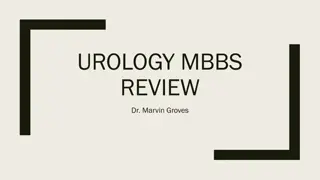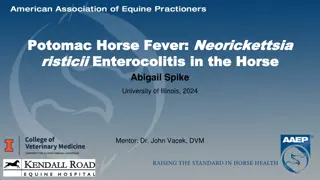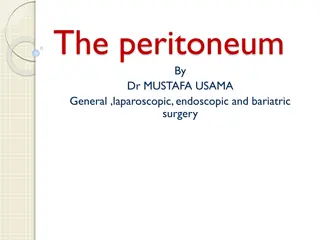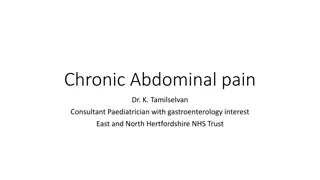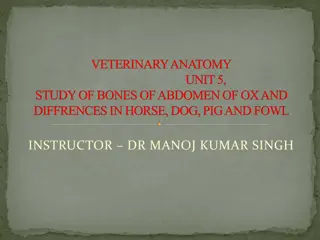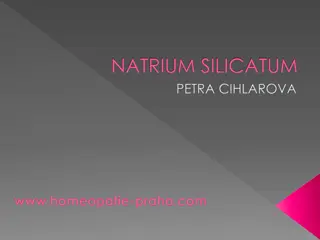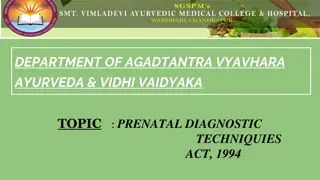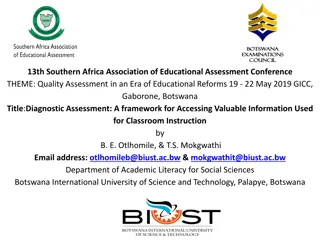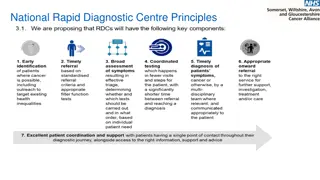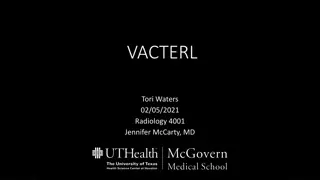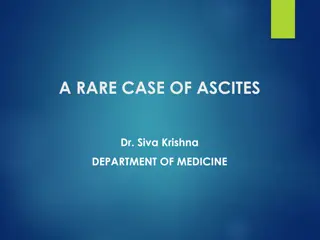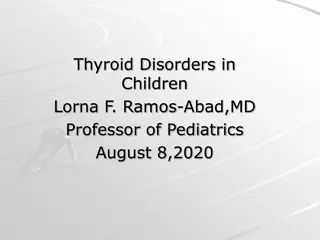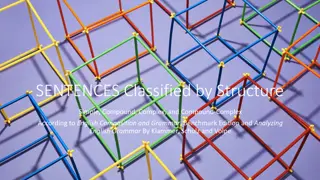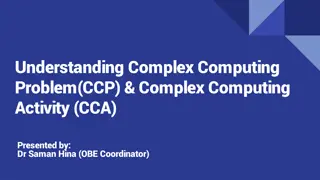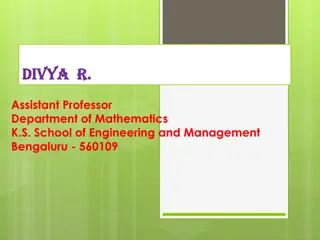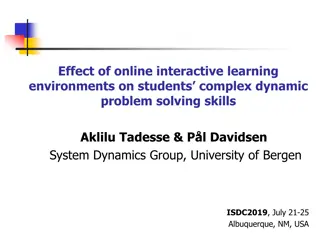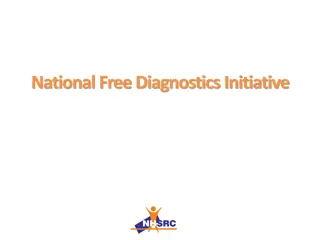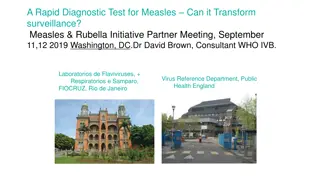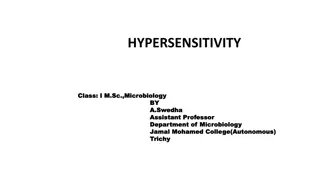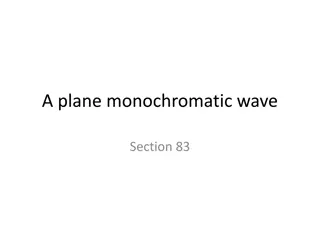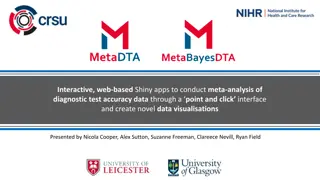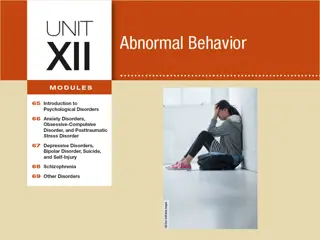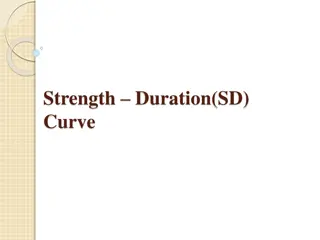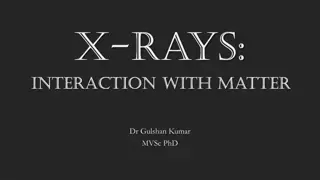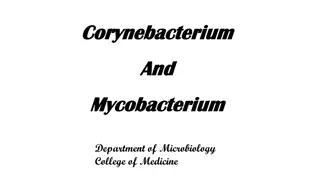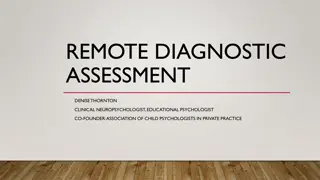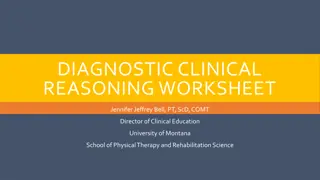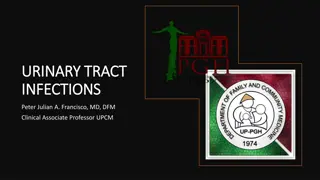Exploring Abdominal Health: Diagnostic Journey of a Complex Case
In this detailed case study, a 37-year-old woman presents with abdominal distension and pain, leading to a diagnosis of a mucinous cystadenoma. Through advanced imaging techniques and surgical exploration, the medical team navigates the complexities of her condition, highlighting the challenges and management strategies involved in dealing with abdominal masses.
Download Presentation

Please find below an Image/Link to download the presentation.
The content on the website is provided AS IS for your information and personal use only. It may not be sold, licensed, or shared on other websites without obtaining consent from the author. Download presentation by click this link. If you encounter any issues during the download, it is possible that the publisher has removed the file from their server.
E N D
Presentation Transcript
ABDOMEN -A HUMAN PANDORA S BOX Dr. Brinda Shingala under the guidance of Dr (Brig) Sukesh Kathpalia Dr. D Y Patil Medical College, Pune
INTRODUCTION In the last two decades, there have been many great advances in radio-imaging. diagnosis is almost certain preoperatively in a case of lump in abdomen. To an extent that Even management of a case of especially in the reproductive age group remains challenging abdomen still remains a Pandora s Box. with these sophisticated large lump in abdomen modalities,
MY CASE 37year-old, unmarried came with complaints of gradual abdominal distension dull aching pain in the lower abdomen indigestion for the last 6 months. Menstrual history - normal. Past and family history - non-contributory.
General Examination Height 143cm. Weight 37kgs. BMI 18.8 kg/m2 Pallor was present. No lymphadenopathy including the Virchow s node.
Physical Examination Abdomen was uniformly distended. The mass was appeared solitary, non tender, mobile and cystic. The lower margin of the mass could not be reached. A dull note was felt over the mass. Shifting dullness was absent. External genitalia appeared normal. Being unmarried gynaecological examination was not done.
Ultrasonography Right adnexal 25x20x18cm cystic lesion seen extending in the upper abdomen. Left ovary was visualised. Right ovary was not clearly visualised Investigations Haemoglobin- 7.8 g/dl. Tumour markers- CA 125 74 U/ml CEA < 0.5 ng/ml Rest of her labs were normal. CT scan Thin walled, mixed density, moderately heterogeneous enhancing abdomino-pelvic mass of 30x27x8cm arising from the right adnexa. Uterine size was normal. No evidence of ascites or peritoneal deposits. Left adnexa - normal.
Provisional diagnosis Mucinous cystadenoma The patient was counselled for exploratory laparotomy. Possibility of hysterectomy was explained and its consent was taken. The cause of anaemia was found to be iron deficiency and two units of packed red cells were transfused pre-operatively
Intra-operative Findings Bosselated appearance, irregular margins, smooth surface, solid and cystic components were felt. No adhesions were seen. Uterus, ovaries and the fallopian tubes on both sides were normal and separate from the mass. They were preserved. The mass was seen arising from the right cornua of the uterus. After careful dissection of the overlying peritoneum around the base, it was clamped, transfixed, ligated, and sent for frozen section.
The frozen section report- a 3.7kg benign neoplasm with cystic degeneration measuring 35x30x28cms. Haemostasis was achieved and the abdomen was closed en-mass. The final histopathology report showed a leiomyoma with degeneration with no features of atypia. The post-operative period was uneventful, and the patient was discharged on post-operative day 10 after suture removal
TAKE HOME MESSAGE Knowing what we may find once the abdomen is opened is not always certain before the surgery despite a complete evaluation; hence it is aptly called a Pandora s box. Differential diagnosis should always be kept in mind before operating as it helps to tackle rare situations where the intraoperative diagnosis may differ from the preoperative diagnosis.






